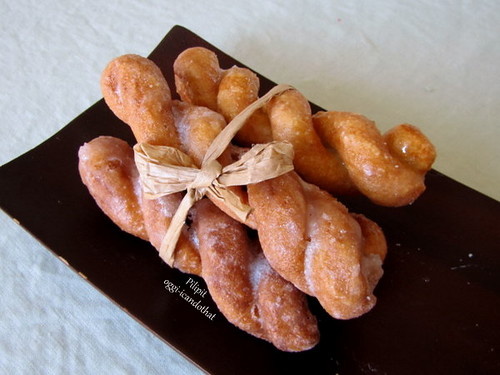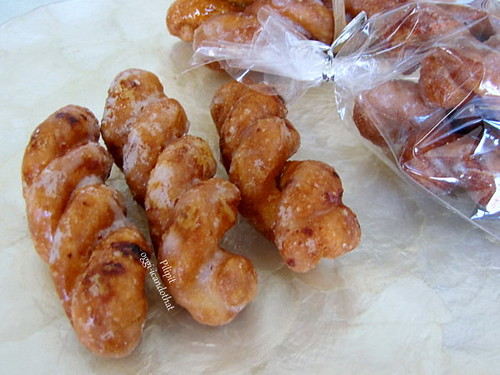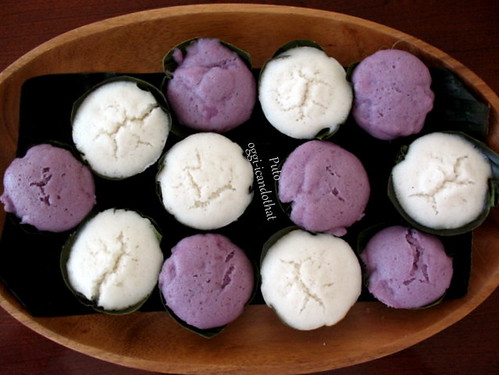budbud kabog (millet and coconut milk rolls)
Suman, a Filipino snack wrapped in banana leaves is usually made of either raw or precooked glutinous rice. The bundles are boiled in plain water for about an hour and they are best eaten with ripe mangoes, with coconut milk sauce, or simply dipped in sugar. About three years ago I read about the millet seed suman which is a favorite in the Visayan region of the Philippines. The seeds are precooked in coconut milk before rolling into fat cigar shape and wrapping in banana leaves.
I've never had millet suman before which has a rather funny name, Budbud Kabog, and I have no idea what it means. And I always thought millet seeds are for making birdseed and suet cakes. I found millet seeds at the health food aisle of the Asian grocery. Koreans cook them in rice together with red and black beans. I bought 2 kinds [because I don't know what kind they use in the Philippines], glutinous, from India, which are green in color like green mungbeans, and the yellow-colored non-glutinous from Korea.
I mixed the 2 millets, about ¾ cup of each, washed them thoroughly, then cooked them in a large wok in coconut milk and added water (as needed) until the seeds are soft, then added 3 tablespoons of sugar and ½ teaspoon sea salt. The suman is good, not better than glutinous rice suman, but I like it because I'm a sucker for anything cooked in coconut milk and wrapped in fragrant banana leaves. I actually like the soft grains which are almost like corn grits or tiny quinoa. It was worth the time making them and I love it with ripe mangoes of course. *Now, why do I suddenly have the urge to chirp?*
 the suman is pale yellow, almost white, maybe because of the green seeds
the suman is pale yellow, almost white, maybe because of the green seeds
Here is the recipe which I modified using canned coconut milk.
left: glutinous rice suman with coconut milk and raw sugar sauce
right: glutinous and non-glutinous rice suman with chocolate and peanuts




